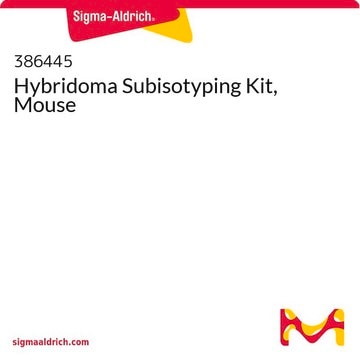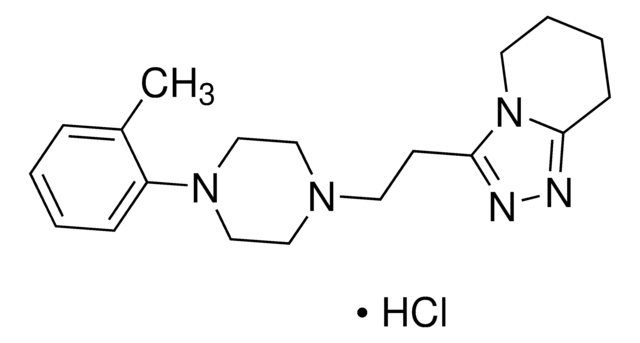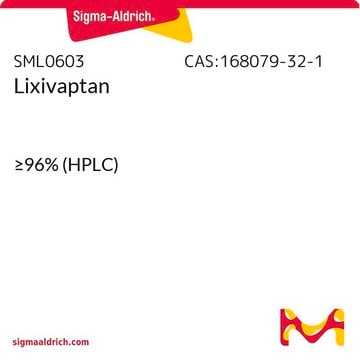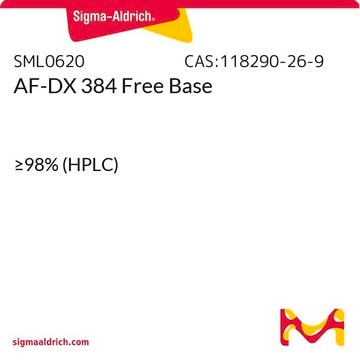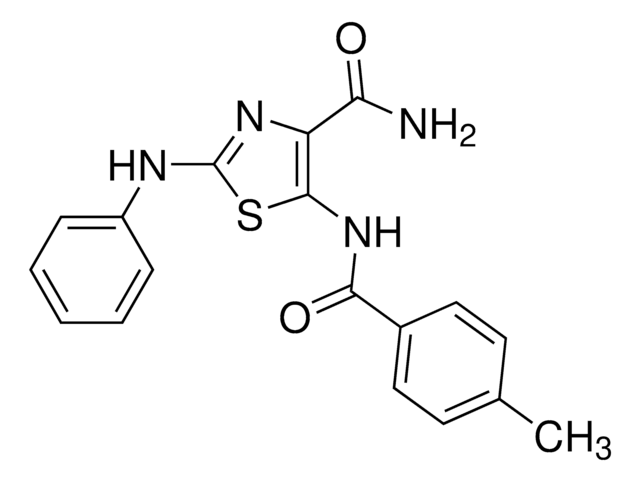SML2209
Benactyzine hydrochloride
≥98% (HPLC)
Synonym(s):
α-Hydroxy-α-phenyl-benzeneacetic acid 2-(diethylamino)ethyl ester, 2-Diethylaminoethyl benzilate, Benzilic acid 2-(diethylamino)ethyl ester, α-Hydroxy-α-phenylbenzeneacetic acid 2-(diethylamino)ethyl ester, 2-(Diethylamino)ethyl benzilate hydrochloride, Benactyzine
About This Item
Recommended Products
Assay
≥98% (HPLC)
form
powder
storage condition
desiccated
color
white to beige
mp
177-179 °C (lit.)
solubility
H2O: 2 mg/mL, clear
storage temp.
2-8°C
SMILES string
CCN(CCOC(C(C1=CC=CC=C1)(O)C2=CC=CC=C2)=O)CC.Cl
InChI
1S/C20H25NO3.ClH/c1-3-21(4-2)15-16-24-19(22)20(23,17-11-7-5-8-12-17)18-13-9-6-10-14-18;/h5-14,23H,3-4,15-16H2,1-2H3;1H
InChI key
ZCEHOOLYWQBGQO-UHFFFAOYSA-N
Looking for similar products? Visit Product Comparison Guide
Biochem/physiol Actions
Signal Word
Danger
Hazard Statements
Precautionary Statements
Hazard Classifications
Acute Tox. 3 Dermal - Acute Tox. 3 Inhalation - Acute Tox. 3 Oral
Storage Class Code
6.1C - Combustible acute toxic Cat.3 / toxic compounds or compounds which causing chronic effects
WGK
WGK 3
Flash Point(F)
Not applicable
Flash Point(C)
Not applicable
Choose from one of the most recent versions:
Certificates of Analysis (COA)
It looks like we've run into a problem, but you can still download Certificates of Analysis from our Documents section.
If you need assistance, please contact Customer Support.
Already Own This Product?
Find documentation for the products that you have recently purchased in the Document Library.
Active Filters
Our team of scientists has experience in all areas of research including Life Science, Material Science, Chemical Synthesis, Chromatography, Analytical and many others.
Contact Technical Service